Native American on the Astor Expedition
Image: Marie Dorion – Escape 1814 by John Clymer
Marie Dorion (1786–1850), a Native American of the Iowa tribe, was the only female member of the Astor Expedition (1811-1812) from Missouri to Oregon Country. Her journey followed that of Sacagawea by six years, but Dorion’s 3,500-mile trek was both longer and much more difficult. Her epic story shows the strength and perseverance needed to survive in the unforgiving wilderness of the Pacific Northwest.
Childhood and Early Years
A member of the Iowa tribe, Marie was probably born in 1786. It appears that Marie did not to have a Native American name. She was most likely baptized in the Roman Catholic Church early in her life; she also gave Christian names to her sons, Jean Baptiste and Paul.
While still a teenager, she married Pierre Dorion, whose father was French Canadian; his mother was a member of the branch of the Sioux Nation that lived near modern Yankton, South Dakota. Pierre and Marie settled in this area just after the nineteenth century began, and some consider him “the first white resident of South Dakota.”
Men of French heritage had far better relations with Native American women than other Europeans, and they often assimilated into their wives’ tribes. Pierre Dorion made a living in the fur trading business that centered in St. Louis, Missouri. Fur trading involved almost constant travel, and Marie often accompanied him on buying and selling trips through what would become the states of North and South Dakota, Nebraska, Iowa, Missouri and Arkansas.
The Astor Expedition
New York fur magnate John Jacob Astor had determined to expand his fur trading empire beyond the Great Lakes. Astor’s plans were to create a company that would control the entire existing fur trade, and to extend it all the way to the Pacific. However, his presence there was not welcomed by the British who had claims in that area and Canadian enterprises, including the North West Company and the Hudson Bay Company.
Astor understood that his proposal for the expedition was as much political, as it was commercial, but he was not willing to “concede so lucrative a trade to their British and Canadian counterparts without a spirited contest.” In 1810 Astor and his working partners established the Pacific Fur Company. Soon thereafter his sea company founded a fur trading post they named Fort Astoria on the Columbia River in Oregon Country – the first U.S. settlement on the Pacific Coast.
In 1810, ambitious young St. Louis merchant Wilson Price Hunt, age 29, was hired to lead an expedition seeking an overland route from Missouri to Oregon Country. Along the way, Hunt’s mission was to identify locations where fur trading posts could be established that could also serve as way stations to expedite communications between Astor’s Eastern headquarters and the Western trading posts.
Hunt’s orders were to get the best scouts and translators for the journey by paying more than the Canadian companies. As interpreters, Hunt hired half Yankton-Sioux, Pierre Dorion and his wife Iowan Marie Dorion, and paid them a nice advance. Between the two they knew several Indian dialects plus English, French and Spanish.
Marie, the only woman on the expedition, probably did not yet know that she was pregnant. Son Jean Baptiste was five and Paul was a toddler of two when the young family set out on the long, unmapped journey from Missouri to Fort Astoria. During the nation’s three centuries of westward expansion, men had discovered the advantages of having a native woman along when they ventured into new territory.
Hunt would make several disastrous decisions, but they would lead to famous discoveries. First, he began the expedition just before winter. Lewis and Clark had started out early in the year, after the ice melted, reaching their goal in early November. Hunt wintered in Missouri, and was forced to spend part of the following winter getting through the mountains.
Leaving St. Louis on October 21, 1810, Hunt and his party was composed of 60 persons, five of whom were partners of John Jacob Astor’s Pacific Fur Company. They traveled 450 miles up the Missouri River in three boats before setting up winter camp a month later on Nodaway Island at the mouth of the Nodaway River just north of St. Joseph, Missouri.
The Astor Expedition left their winter camp on April 21, 1811. On May 26, Hunt met up with three veteran hunters who were on their way to St. Louis – Edward Robinson, John Hoback and Jacob Reznor. Although they were headed back to Kentucky, Hunt persuaded them to join him and go all the way to the Pacific Ocean. They in turn persuaded Hunt to change his route.
These experienced mountain men suggested that instead of following Lewis and Clark’s path to the Forks, through Lemhi Pass and north to the Lolo Trail, he should take a southern route to avoid an encounter with the notorious Blackfoot tribe. They reached an Arikara Indian village at the mouth of Grand River on June 12.
Hunt’s new itinerary called for him to leave his boats there and go overland, but his departure was delayed until July 18, 1811 because of the difficulty of obtaining horses. When at last the party left, they had only 82 horses, most of which were used as pack animals. The partners plus Pierre Dorion and the two children rode, but Marie walked until additional horses were obtained from the Cheyenne and Crow Indians.
The party traveled with relative ease through South Dakota and Wyoming, and accumulated 6,000 pounds of dried buffalo meat. Traveling west and southwest, Hunt crossed into present-day Wyoming near its extreme northeast border, skirted the northern side of the Black Hills, continuing in an approximate straight line to cross the Powder River.
Before leaving the expedition, a veteran mountain man named Edward Rose helped them make two difficult mountain crossings. The Powder River Pass in the Big Horn Mountains of north-central Wyoming ran between the 12,420 foot Mather Peak and 10,555 foot Hazelton Peak. At the Bighorn River, they traveled south to the Wind River, and proceeded up near its headwaters where they crossed the Continental Divide at Union Pass.
In September 1811, the expedition reached Henrys Fork – a tributary of the Snake River in present-day southeastern Idaho. At that point, Hunt made a nearly fatal error of judgment. Because the Snake River was a tributary of the Columbia River, Hunt assumed that the remaining 1,000 miles could be made by water. There the expedition abandoned their horses and constructed 15 dugout canoes.
After leaving Henrys Fork on October 18, 1811, the Hunt party soon encountered a series of rapids, where portages had to be made (they had to carry the boats) along high bluffs. While attempting to run one set of rapids ten days later, about 340 miles below Henrys Fork, a canoe wrecked. One man drowned and a great deal of their food and other supplies were lost as well. The river was declared unnavigable.
Now without horses, it became necessary for Hunt’s party to cache a large part of their supplies and continue on foot. They then divided into three main groups: two of explorers, one of trappers. The factions led by Ramsey Crooks and Wilson Price Hunt, including the Dorion family, traveled on opposite sides of the rocky Snake River.
After leaving the canoes, Marie and her little boys walked most of the Snake River Valley. She traveled “without a murmur and keeping pace with the rest of the expedition.” Since he was so small, Marie must have carried the younger one on her back most of the time, though she was by then eight months pregnant.
Upon encountering a small Indian band on November 17, Hunt succeeded in buying a horse to use as a pack horse. Two days later, he obtained a second horse for his personal use. At the next camp, an Indian claimed that Hunt’s second horse had been stolen from him. Hunt was forced to give it up, but he was able to buy two others. Pierre Dorion also bought a horse so that Marie and the children were again able to ride.
Near the end of November, Hunt’s party was forced to start killing their few horses for food. Dorion resisted all efforts to kill his horse, though it was almost starved. They did not re-establish communication with Crooks’ group until early December. Finding them in worse physical condition for lack of food, Hunt was forced to spend much time and effort getting some horse meat across the river to them.
Twice in November and December the party had to stay in Shoshone Indian camps for a short time because of heavy snows and lack of food. One time, they came upon a Shoshone camp that had a small herd of horses. For the weary travelers the temptation was too great; they scared the Indians away and seized five mounts.
As her time neared, Marie was given a horse of her own. After an arduous 27-mile ride past present-day Baker City, Oregon, she went into labor and her third child was born on December 30, 1811 near North Powder, Oregon. The next day she and her family caught up with the party. A vote was taken on whether to kill Marie’s horse for dinner. The men voted to go hungry.
A week later, they found an encampment of friendly Umatillas in the Grande Ronde Valley. The women nursed Marie and her baby, but deprivation took its toll and the infant died. It was another five weeks before Hunt’s party arrived at Fort Astoria on February 15, 1812. A party of hunters had arrived a month earlier.
Of the original 60 members of the Astor Expedition, 45 made it to Fort Astoria, but they failed to blaze a dependable trail to Oregon. However, they did make in great discoveries in Wyoming, including the South Pass through the Rocky Mountains through which hundreds of thousands of settlers would later follow along the Oregon, California and Mormon Trails. A large portion of Hunt’s route became part of the Oregon Trail.
Astor’s entire endeavor to control the northwest fur trade came to an end soon after the beginning of the War of 1812. After news came that the British warship HMS Raccoon was approaching, the partners sold Fort Astoria to the North West Company of Montreal. It was renamed Fort George. Astoria’s legacy was the establishment of the first permanent American settlement in the Pacific Northwest, and it became a strong argument in the United States’ claim for that land.
Into the Wilderness Again
In July 1813 the Dorion family left Fort Astoria on a beaver trapping trip. The party, led by John Reed, established their base of operations for the winter up the Snake River, at the mouth of the Boise River in present-day southwest Idaho. There, the party was divided into smaller units which created several outlying trapping camps during the winter of 1813-1814. Pierre Dorion, Giles LeClerc and Jacob Reznor assigned to trap along the Boise River. Marie and the children remained at the base camp.
The party established a friendly relationship with most of the Shoshone who lived in the area, but a group known as the Bad Snakes persistently harassed the newcomers. In January 1814 a Shoshone warned Marie that a band of Bannocks were burning the remote camps. Marie set out on a horse with her two children to warn her husband.
Three days later she discovered their hut. They had been ambushed that morning while on their trapping line, and Pierre Dorion was dead and Giles LeClerc was wounded. Marie strapped LeClerc to his horse and began the frigid three-day journey to the base camp. Although she desperately tried to save him, LeClerc died. More horror greeted Marie back at the main camp: all the men there had been murdered, scalped and mutilated.
Marie was alone in the wilderness with her little sons. Leaving immediately, she headed back west, seeking refuge with friendly Indians she had met along the Columbia River. After nine days, deep snows stopped her and the boys in the Blue Mountains. They built a crude hut of boughs and skins. When their food ran out Marie killed their two horses, and horse meat was their diet for 53 days.
When it appeared that spring had come, Marie set out on foot – only to be caught by another blizzard. When they could go no further, the children’s feet bleeding, Marie burrowed a hole in the snow, lined it with furs, stashed Paul and Baptiste inside and went for help. She was wandering partially snow blind, when rescued by the Walla Walla tribe and taken to their village. Braves were immediately sent for her sons.
There she was found in April by members of the Fort Astoria group who were on their way back to St. Louis. They took her to Fort Okanogan, a Canadian fur station in present-day Washington. Marie lived at Fort Okanogan for several years with a French-Canadian trapper named Louis Joseph Venier. They had a daughter named Marguerite before he, too, was killed by Native Americans.
Jean Baptiste Toupin – a French-Canadian interpreter at Fort Nez Perce, another North West Company trading post – then entered Marie’s life. With Toupin, she had two more children: Francois and Marianne. On July 19, 1841 Marie and Toupin were married in a Roman Catholic ceremony.
In 1841 the Toupins and the families of Marie’s sons Paul and Baptiste Dorion became the first settlers of the French Prairie in Oregon’s fertile Willamette Valley north of Salem. There white neighbors called Marie ‘an impressive and admirable woman.’ By 1850 Marie and Toupin were living quietly in the nearby community of Saint Louis, one of the oldest communities in the state.
Marie Dorion died there on September 5, 1850, just as the great migration on the Oregon Trail was beginning. She was buried inside the original log Roman Catholic Church in Saint Louis.
Marie Dorion’s story became well known in her lifetime through the published recollections of Fort Astoria pioneers and through Washington Irving’s book Astoria (1835). Her son Paul escorted famous writer Francis Parkman on the Oregon trail, while Jean Baptiste went on to a career with the British Canadian fur-trading Hudson Bay Company.
Among the places memorializing this great Native American are Madame Dorion Memorial Park in the foothills of the Blue Mountains. There is a plaque noting the place near North Powder where she likely gave birth. Hers is also one of the 158 names of people important to Oregon’s history that are painted in the House and Senate chamber of the Oregon State Capitol. Her name is in the Senate chamber.
Several sites along the Walla Walla River commemorate Marie Dorion as the Madonna of the old Oregon Trail. Author Jane Kirkpatrick wrote the Tender Ties trilogy of historical novels based on Dorion’s life.
SOURCES
Marie Dorion
Wikipedia: Astor Expedition
Wikipedia: Marie Aioe Dorion
NWHM: Marie Dorion (1786-1850)
Historynet: Marie Dorion and The Astoria Expedition
by Rebecca Bartholomew / Uintah Springs Press: The Dorion Woman – Her Adventure Outdid Sacagawea’s
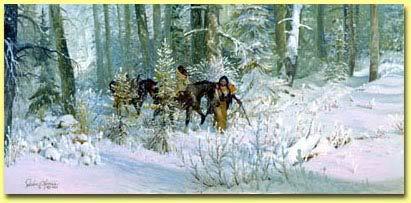
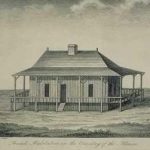
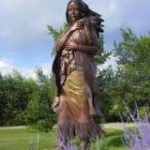
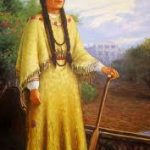
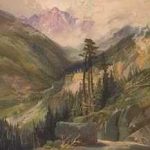
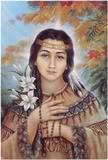
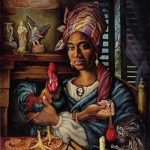
Very interesting, with this article I was able to add her to my family tree. Thanks
An amazing story of sheer determination & a mother’s love for her children fighting against all odds to succeed.
I just read the interesting book Astoria. Marie deserves as much recognition as Sacagawea if not more . I cannot believe what she accomplished. few
people even know of the Astorians and there overland trek which was more difficult
than the Louis and Clark trip up the Misso
Just saw the story of Marie Dorien on TV. Fascinating, sorry not more is known about her. Thank you for this story.
When we went college, my wife’ to-be lived in Dorian Hall, & I was in Hunt Hall